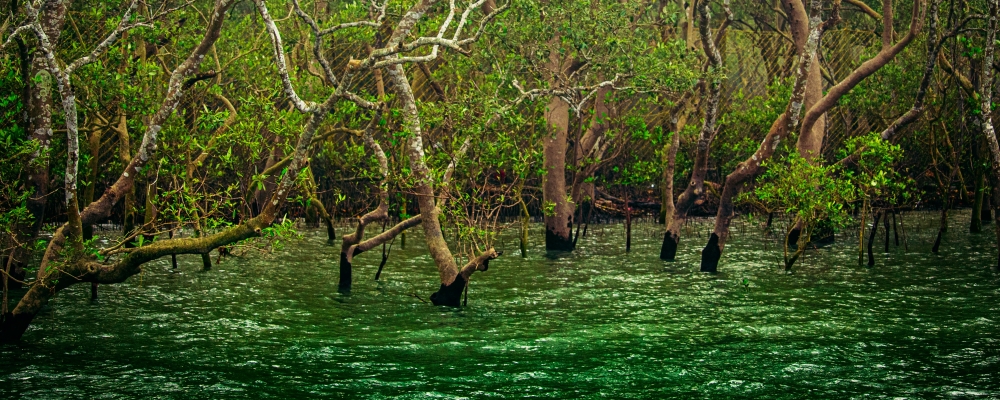- Home
- Popular Tours
- Tours of your interest
- Tour India
- South East Asia
- Online Payments
- Blog
- Discover Malaysia's Cultural Villages
- Digital Transformation in the Tourism Sector
- WILDLIFE TOURISM IN INDIA
- Issues Tourist Encounter While Visiting Ladakh
- Tourism Marts of India
- Issues and Challenges of Tour Operations in North Bengal and Sikkim
- Impact of Climate Change on Himalayan Glaciers and water supply in India
- TRAVEL AGENCY IN INDIA
- BHUTAN: THE THUNDER DRAGON LAND
- THE KONARK SUN TEMPLE: THE PRIDE OF ODISHA
- Discover the Iconic Tanah Lot Temple
- Top Bars in Bali for a Memorable Night Out
- Experience Bangkok Nightlife: Night Tours
- Discover the Best Thailand Tours Available
- The World’s biggest EDM festival, “Tomorrowland” all set to arrive in Thailand
- A Guide to Visiting Besakih Temple
- Visit Bali's Lush Botanical Gardens
- Experience Thai Traditional Dance Shows
- Demand for short-haul travel grows: Indian tourists flock to Southeast Asia amidst geopolitical tensions
- Explore Phuket: Exciting Boat Tours
- West Bengal tourism: State leads India in number of certified tourist guides.
- Romantic Bali Honeymoon Packages
- The Belgadia Palace in Mayurbhanj, immerse yourself in art, culture and history.
- Himachal introduce a Border Tourism initiative to open its high- altitude borderline areas for regulated tourism.
- Airlines ask for help from the government to restore air travel demand to Kashmir.
- Top Bird-Watching Tours in Bali
- Heritage Tours in Georgetown, Penang
- Taste of Bangkok: Best Food Tours
- Stay at Langkawi's Luxury Resorts
- Visa-free entry for Indian citizen under these fresh categories in Philippines; review details.
- Best Eco-Tours in Bali for Nature Lovers.
- Visit Borneo's Orangutan Sanctuaries:
- Roadshow to revive Jammu & Kashmir tourism from Pahalgam blow
- Exciting Water Sports in Bali:
- How Indian’s travelers are turning away from Turkey and Azerbaijan and what that means:
- Exciting Island Hopping in Thailand:
- Top Day Trips from Kuala Lumpur:
- Refresh Your Body with Detox Retreats in Bali
- Visit the Stunning Ulun Danu Bratan Temple:
- From Dubai to Bastar: Tourism boards welcome influencers to fascinate travellers.
- Best Diving Spots in Malaysia
- Thrilling Adventure Tours in Thailand:
- “Eight amazing Islands,” you will not believe this places really exist:
- 5 Reason for considering Mukteshwar; the summer weekend gateway journey.
- Thailand has made digital arrival card mandatory to international tourists at entry points.
- The bloom: After the snow, in Kashmir, Asia's largest tulip garden welcomes spring.
- New strict rules for tourists in Bali: Visitors ought to know.
- Family-Friendly Tours in Malaysia:
- West Bengal, Sikkim join forces to boost road connectivity ahead of summer tourism.
- Magical sunset beach tours in Bali:
- Bids invited for developing DPRs for the establishment of a ropeway to Amarnath cave shrine in Jammu & Kashmir.
- Experience Malaysia's Traditional Dances.
- Telengana plans 27 tourism clusters.
- Jammu and Kashmir records tourist arrivals: Are the numbers exact?
- Upcoming Thailand Festivals in 2025.
- Planning your trip to visit Sikkim? Here the latest updates for tourists regarding new entry fees:
- Learn Thai: Language Classes for Beginners.
- Sikkim's jump into adventure tourism: Bungee Jumping at Singshore Bridge.
- The Delhi goverment intends to start cruise tourism on the Yamuna river.
- Arunachal to develop adventure tourism, spiritual pilgrimages, and establish wellness retreats.
- Prepare for panoramic views from the world's highest Chenab railway bridge in Jammu Kashmir.
- Best Diving Spots in Malaysia.
- Pamban Railway Bridge: The first vertical lift bridge in India, which is ready to be opened on Rameswaram.
- Are you are looking for as summer vacation spot? Discover top hill stations of Maharashtra.
- Ride the Iconic Langkawi Cable Car.
- Dry winter deters tourists from visiting Kashmir:
- Top Wellness Activities to Try in Bali
- Government unveils plans to develop 36 more tourist sites under a new scheme
- Karnataka tourism goes digital - a technical revolution for the travelers.
- Visit the Iconic Petronas Towers.
- Vietnam contemplates fresh Visa Policy for Indian visitors.
- Adventure tourism and community development in the spotlight for Kalimpong's new road map:
- Himachal Pradesh Government focus Tea Tourism in Kangra, but only challenges ahead.
- Must-See Bangkok Temple Tours
- High Tourism exchange between South-East Asia and South Korea, but it needs improvement:
- Some Ultimate Guide To Ubud's Attractive Land: Tegallalang rice Terrace.
- How travel marketing will evolve in 2025 with the use of social media.
- Kerala's K-HOME Project, initiative to transform vacant houses into budget tourism facilities
- Top 10 Beaches in Malaysia:
- Budget 2025 Industry Experts, It's A Game Changer For India Tourism And Hospitality Sector:
- Best Bali Tour Packages for 2025
- Conquer Mount Kinabalu: Trekking Guide
- Nepal reopening for all tourists 2025 - 2026
- Mahakumbh Mela: 10 crore people to take Amrit Snan, 60 special trains to run on Mauni Amavasya
- National Tourism Day 2025: Its Theme, Significance, History & Government Initiative
- Traveling to Bhutan in 2025 or 2026:
- Explore Langkawi Top Island Tours, Discover Langkawi with our top island tours. Book your adventure today!
- Maha Kumbh Mela 2025: Must Do things at Kumbh Mela in Prayagraj
- Travel Future 2025 What is Driving the Next Generation Journey?
- Industry demands of the growing medical in India union budget pinned hopes on 2025 :
- Explore Penang: Top City Tours
- Best city tours in Kuala Lampur:
- Top 10 Beaches in Thailand You Must Visit
- Find out how you get malaysia tour:
- Chiang Mai Overall Experience into wild Elephant camp:
- Southeast Asia is the biggest tourists destination in 2024
- Top Phuket Island Tours You Must Experience
- Ayodhya is taking place as a top tourist destination in 2024 as it overtakes the Taj Mahal!!
- Kolkata airport Set to become Global aviation Hub
- Explore Bangkok A Journey to Discover Its Many Facets::
- Top 10 Thailand Tour Packages for 2025
- In 2024 Ayodhya will overtake the Taj Mahal as the most popular tourist site in Uttar Pradesh:
- The Amrit Bharat Station Scheme would renovate ten railway stations in Lucknow:
- Winter advisory for Kashmir As Kashmir records the coldest night of the season kashmir prepares for Chillai Kalayan::
- New jungle safari in the Terai forest will boost tourism and employment!!
- Holiday Travel Trend 2024: Goa tops the charts as India plans extended festive getaways
- The Maha Kumbh 2025 would enable Uttar Pradesh to showcase its tourism potential!!
- Mizoram capital Aizawl train connection will be available by July 2025::
- Indian Tourism sector to double in 10 years, says WTTC Chief
- These destinations invite you to unwind, reflect, and rejuvenate amidst their natural beauty and serene ambiance
- India offers enchanting destinations where you can connect with nature without compromising on comfort
- Wayanad – The perfect summer escape
- Bengaluru- The vibrant city
- Bali to Bermuda- The perfect summer destinations
- The newest travel trend “Destination Duping”
- The shortest route linking Manali to Leh
- Best Summer Escape Destinations to Travel For
- Travel for this unique wildlife experience
- Spain wants Tourists to “Go Home” as the locals opposed to being kicked out of their own homes to make way for tourists to stay
- Embrace the spirit of Holi with these “Colorful Gateways”
- Havelock Island – The heart and soul of the Andamans
- Travel Insurance Policy ensure a hassle-free resolution for peace of mind
- With careful planning and extra attention, you can ensure smoother travel experiences for elderly companions
- Senior-friendly destinations in India
- AI is beneficial for the hospitality industry
- Thailand’s one of its strategies to boost tourism
- Patna and Varanasi have featured the greatest number of tourists recently
- US visa can get rejected if not prepared properly
- World’s first-ever 3D printed mosque in Saudi Arabia
- Iran invites Indians to explore its true essence, beyond the spoiled image created by the West
- Iran – The Land of the Aryans
- Goa-Beaches to soon have workcation experience for the professionals
- Ex Maldivian President expects Indians to get past through the present circumstances and return to their usual amicable relationship
- To tackle over tourism issue Mount Fuji has hike the entry fee
- Top two picturesque destination of Central Vietnam
- New initiative by Assam tourism department
- Saudi Arabia is looking at a six-fold increase in tourists from India to Saudi Arabia by 2030
- The country is all set to get its first-ever underwater metro service in Kolkata
- Saudi Arabia initiate 96-hour stopover visa to Indian travelers
- Bali government set new rules for the unruly tourists to keep in check
- Dwarka – Where Ancient Myth Meets Timeless Beauty
- India’s longest cable-stayed bridge in Gujarat
- India’s first-ever vertical lift sea bridge
- For Indian travelers Dubai launches a 5 year multiple entry visa
- Uri selfie point is now popular among tourists
- India’s first Sea Zipline in Ratnagiri, Maharashtra
- Gulmarg’s wintry charm is truly captivating
- Thailand government announces a new scheme for the travelers
- Over tourism has ruined these irreplaceable destinations
- Odisha’s Hidden Gem - Gupteswar forest declared as fourth Biodiversity Heritage Site in state
- Explore the beautiful destination of Bali and Lombok - Indonesia (South East Asia)
- The invisible divider between Bali and Lombok (Indonesia) which mysteriously separates living species
- Five Indian cities marked its position in the 100 best food places in the world ranking
- Mipig Café in Tokyo has become a popular attraction for tourists for its unique themed café
- First mountain flight to Kailash Mansarovar has commenced from Nepalgunj
- Vietnam’s village Quang Phu Cau gain popularity amongst tourists
- Kerala is preparing for a new cruise service from Kochi to Dubai
- Food Tourism in Eastern region of India (Part – 4)
- Food Tourism in Southern Region (Part-3)
- Food Tourism in Northern region (Part 2)
- Food Tourism all over India – Introduction (Part 1)
- Tea Tourism – Indian masala tea secures 2nd spot on prestigious rating of top non-alcoholic drinks by Taste Atlas
- India is planning airfield development in the Minicoy islands
- Gujarat is all set to launch country’s first Submarine Tourism
- Effect of Political and Diplomatic Issues on “Maldives Tourismâ€
- Gujarat Tourism’s Pre Vibrant Summit
- West Bengal is now a popular destination among foreign tourists
- National Conference organised by Ministry of Tourism positioning India among Top ten adventure destinations
- Benefits of having an US visa
- The Country Sent Most Tourists to India
- India on the path to become 5th largest market in tourism industry
- Thailand’s Songkran festival as an Intangible Cultural Heritage declares UNESCO
- Dubai – City of Luxury
- Iran is now a visa free country for 33 countries including India
- Good News for Holiday Makers and Christmas lovers- KSRTC launched a special package in Kerala
- Kenya is also giving visa free entries now, including other countries
- Travel time of Mumbai and Ahmedabad likely to get shorter from March
- Indonesia is now all set for visa free entries after Thailand, Sri Lanka and Malaysia
- Christmas week is the best time to travel these places
- Tourists are now allowed to visit Sikkim: Lachung, which was affected by flash floods
- Asia’s most famous and beautiful temple’s for a spiritual stopover
- Best warm destinations in India for tourists to beat the winters
- San Francisco (The Golden gate City) – identified India among its top tourism sectors
- India’s economy is recovering after pandemic as people opting to travel rather staying home
- Indians can now travel to these countries without visa including Malaysia
- Indian tourism witnesses impressive comeback
- Singapore witnesses a huge numbers of Indian tourist’s arrivals
- Sri Lanka introduced dual entry visa for India
- Bhedaghat town in Jabalpur City (Madhya Pradesh)
- Malaysia is now a visa free country for tourists coming from China and India
- Udaipur - The City of Lakes
- Top travel destinations Indians can visit without a visa
- Chennai City - The gateway to the rest of South India
- Sundarbans - The home of The royal Bengal Tiger
- Ajanta and Ellora
- South Korea - The Land of the Morning Calm
- New Zealand, the island country
- India’s most popular destination of all time
- Khajuraho, the ancient city known for its magnificent temples and intricate sculptures
- Pondicherry, The city in the Puducherry district on the southeast coast of India
- Rajasthan - The Land of the Kings and Maharajas
- Hampi, the city in the Vijayanagara district
- Rishikesh - The Land of Divine and Adventure
- Nainital - The Land of Greens and Blues
- Coorg - The Land of Enchantment
- Mussorie - The Queen of Hill Stations
- Manali, the beautiful town of Himachal Pradesh
- Kolkata - The City of Joy
- Andaman & Nicobar Island
- Lakshadweep - Coral Islands
- Switzerland- The Dream Destination
- Bhutan - Land of the Thunder Dragon
- Ranchi - City of Water Falls
- Munnar - A beautiful hill station in Kerala
- Goa - The Land of Beaches
- Tamil Nadu - The Land of Temples
- Mumbai - The City of Dreams
- Varanasi - The City of Light
- Pahalgam - The Valley of shepherds
- Kedarnath - The lord of the field
- Puri - The Land of Jagannatha
- Madhya Pradesh - The Tiger State of India
- Kalimpong - The land of white orchid
- Sikkim - Small but beautiful
- Leh Ladakh - Dream destination of the riders
- Kashmir - The Paradise on Earth
- Karnataka - The land of sandalwood
- The Golden Triangle - Delhi, Agra, Taj Mahal
- Shillong - The Scotland of the East
- Bangladesh - Land of the Bengals
- Krabi - The Land of Limestone Beaches and Cliffs
- Kerala – Most popular tourist destinations in the country
- Laos - a place with gorgeous landscape
- Cambodia- A place with historical values
- Pattaya- A famous city in Thailand
- Singapore – the tourists’ attraction
- Phi Phi Island, an island group in Thailand
- Current Tourism Situation in India
- Sri Lanka- A beautiful Travel Destination
- Trip to Bangkok
- Thailand Trip
- Trip to Malaysia
- Maldives - The Tropical Paradise
- Indonesia - The Land of the Thousand Islands
- Vietnam, an emerging travel hotspot in South East Asia
- Trip to the Queen of Hills - Darjeeling
- Sittong - Orange Trail in the Himalayas
- Darjeeling Himalayan Railway (DHR) or Toy Train
- Indian Travel Trends
- Sikkim Tourism
- Darjeeling Tourism
- Travel time of Mumbai and Ahmedabad likely to get shorter from March


